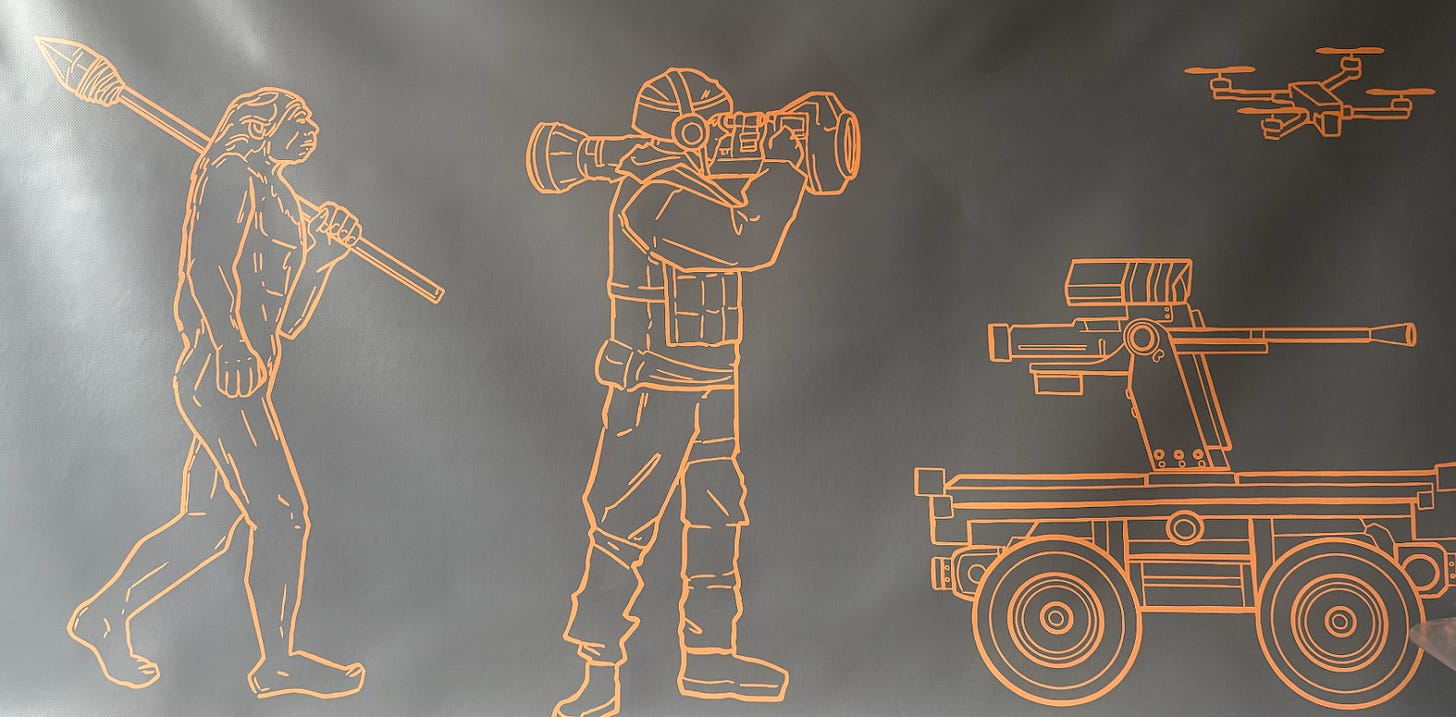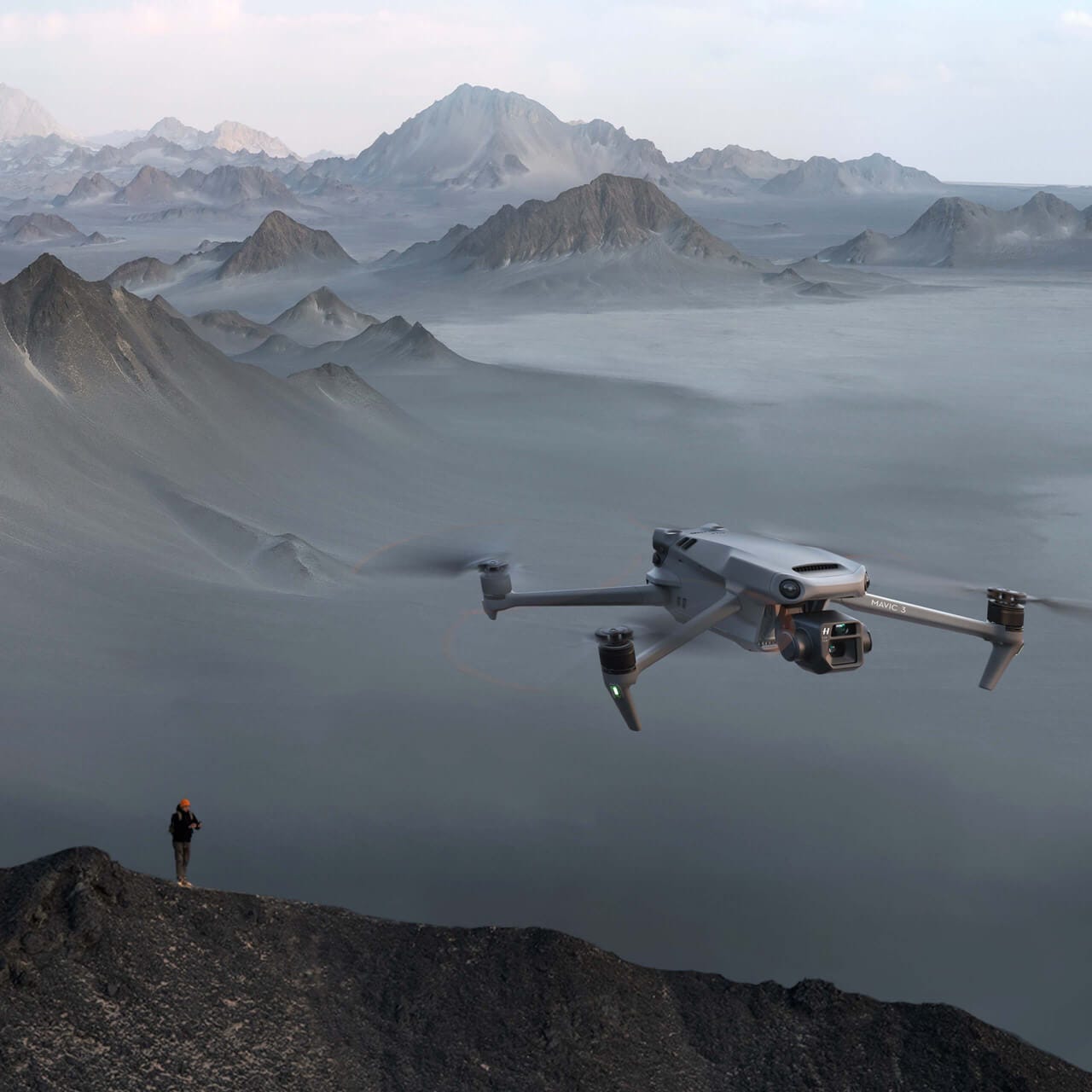Notes from Kyiv: Inside the World's Fastest Defense Tech Lab
One of the most striking things about being in Kyiv is how the war is both everywhere and nowhere.
Recruitment ads plaster the streets - and surprisingly brigades independently advertise themselves like brands. The most famous ones are Azov and the 3rd Assault Brigades. These have evolved from military units into cultural movement: selling merch, hosting music festivals, and running independent fundraising campaigns. This decentralisation of warfare is even taking over procurement, as each brigade increasingly buys and iterates on its own equipment.
Military presence is part of daily life: a poster at a gas station calling for donations, military ambulances passing by, even robot soldiers casually on display in public spaces.
And yet, life goes on. People go to work. Cafés are full. Nobody flinches when the air raid sirens scream through the night - not even the local saxophonist player:
Having spent the week there meeting with founders, investors and officials, it is striking to notice the pace of technological innovation. It is not rare to meet companies created in the past 18 months, which have now reached the €5-15m range of revenue, while launching 4 different product lines (from drones, UGVs, turrets) and changing the design every week.
Overall, their ability to produce at scale cheap and reliable equipment is unmatched and Western tech is often joked about. Truth is, Starlink is the only Western piece of tech that has really penetrated the battlefield. This is a key advantage over the Russians, who have now built their own kind of Internet bridge but are not as flexible. I accompanied a team for a test to a remote polygon and it was impressive to see how in 2 minutes, you could deploy a Starlink on the roof of a pickup, a radio antenna and start operating a swarm of autonomous drones from your laptop.
Everyone here talks about autonomy—but we’re not fully there yet. Most drones still involve a human in the loop, especially for target identification and mission execution. There are solid technical reasons for this—communication reliability, visual recognition, edge processing—but cost is a major blocker too. This war has normalized the idea of “disposable everything”: drones, radios, even sensors are often used once and replaced. But the more autonomy and intelligence you cram into components, the less disposable—and affordable—they become.
That’s why the frontier right now isn’t full autonomy, but smart semi-autonomy: features like automatic target tracking, object recognition, and terrain mapping that reduce pilot workload and broaden the talent base. Until now, the best pilots were ex-pro gamers—fast reflexes, great spatial awareness—but that pool is small and Ukraine wants to deploy up to 5 million FPV drones this year. New chips from Nvidia and smart compromises, like laser designation, are already proving to be force multipliers.
And that shift is reshaping the battlefield. What used to be 3km of no man’s land is now 30 to 50km wide. Still, there’s no “magical” tech. Just a constant loop of invention and counter-invention. Jammers lead to new pickups. Those pickups get targeted. Then come fiber-optic drones. Then back again. The cycle never ends. This is further pushing teams to innovate to make drones fly:
Longer - some companies I’ve visited even achieved 28 hours of autonomy
Outside of radar detection - some can fly very low or at 10km altitude
Silently - hydrogen propulsion here is interesting
Expect this year to be the year of deep strikes and ballistic missiles as close combat are becoming impossible.
Production reflects this fast-pace dynamic.
For expandable equipment (<$60k/unit), 3D printing is the way to go. I wasn’t allowed to take pictures for obvious security reasons, but these DIY factories are found in the most intriguing places and are constantly relocated to avoid being targeted. For the most basic drones, the local population is taking the lead: a grass-roots group called SocialDrone taught hundreds of volunteers how to make drones — sharing lists of components to be purchased online and written instructions on how to put them together.
Attritable systems (>$60k/unit) rely on a mostly manual assembly. As designs change almost every week, companies are reluctant to invest in automation and also need to produce only a few thousands of products per year - far from the 5m cheap FPVs Ukraine uses every year. However, local startups are started to open foreign subsidiaries and to partner with car components manufacturers to build larger, automated factories in the West. Expect this to be a growing trend this year.
For now, the real winners on the supply side are Chinese companies. DJI drones and components are omnipresent—not just because they’re cheap, because they work. Many Ukrainian teams told me openly: “Nothing beats the Mavic series.” But that’s changing. Many are beginning to vertically integrate, building their own components or switching to alternative suppliers like Orqa. It’s early, but the direction is clear: less dependency, more control to iterate faster.
This mix—speed of iteration, cost discipline, and increasing in-house manufacturing—has allowed Ukraine to quietly take the lead in key domains like electronic warfare, radio communication, and autonomous navigation. Most of the companies I met remain under-capitalized, often bootstrapped, but they’re on the radar now. U.S. and European defense primes are watching closely. Some are already working with local players via partnerships and joint ventures. Others are positioning themselves for future acquisitions—founders told me they get inbound regularly.
I expect this integration of Ukrainian companies into the global defense market will get even stronger this year. Governments and companies from the West have realized that being battlefield tested beats everything. Integration will come from different ways:
Exports - Most of the startups I met have already started selling abroad, typically through subsidiaries in Estonia, Poland, or Germany.
Partnerships and JV to produce more within Ukraine - their number keeps growing. KNDS or Nammo are already producing 2.5m artillery and mortar shells here for instance, meanwhile Rheinmetall has announced that it will open 2 factories. Quantum Systems is partnering with Ukrainian Frontline. Some believe Ukraine will become the weapon factory of Europe.
Partnerships and JV to produce more outside of Ukraine - here partnerships with the automotive industry will become more common. The logic is simple—Ukrainian companies need scalable manufacturing, and Europe’s struggling car industry has the idle capacity and quality standards to deliver it.







